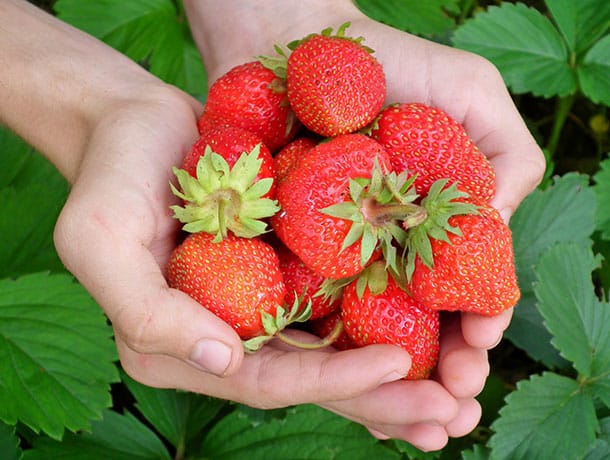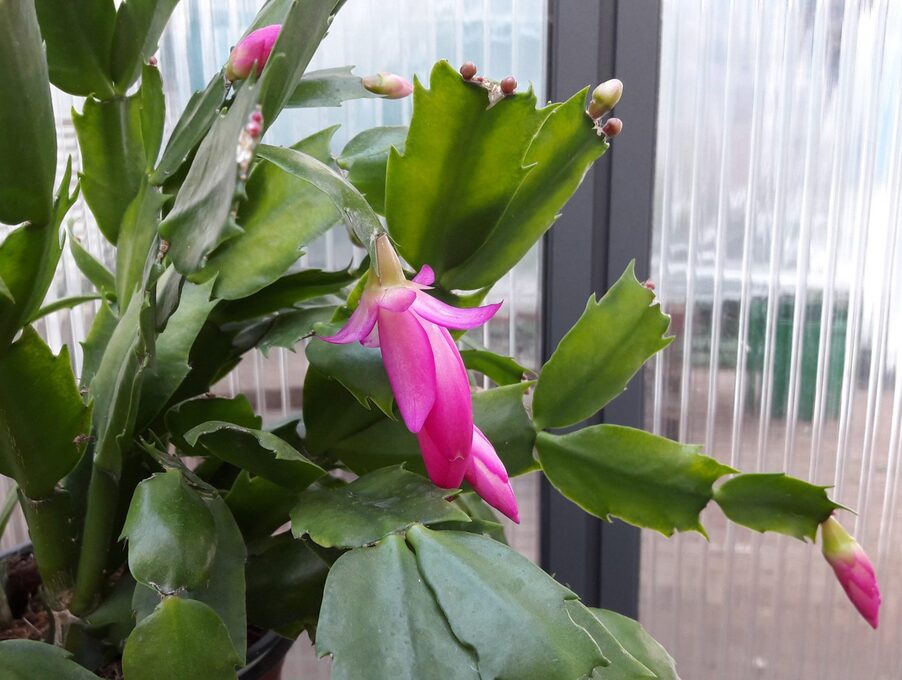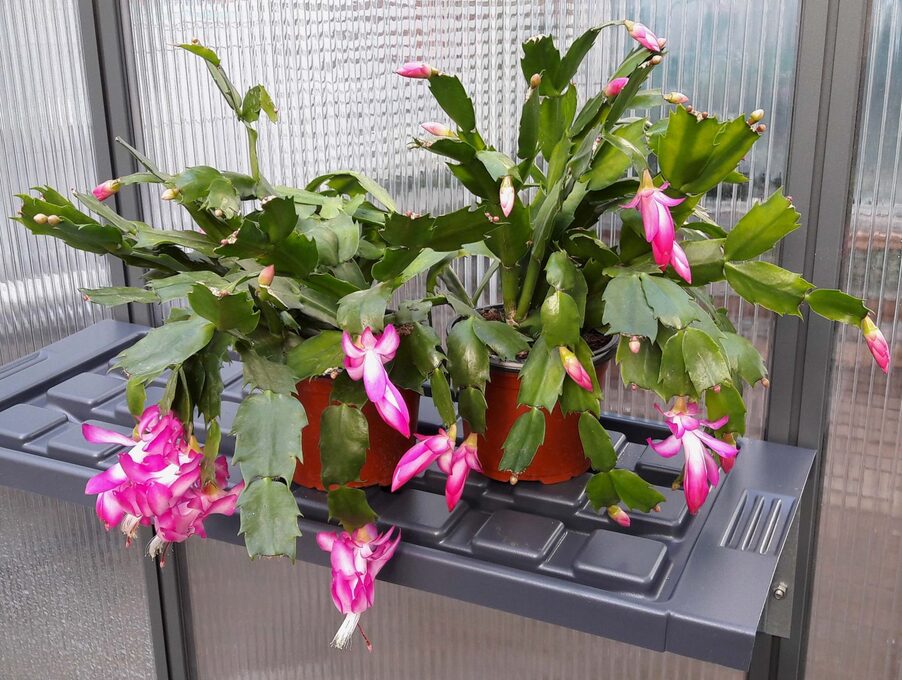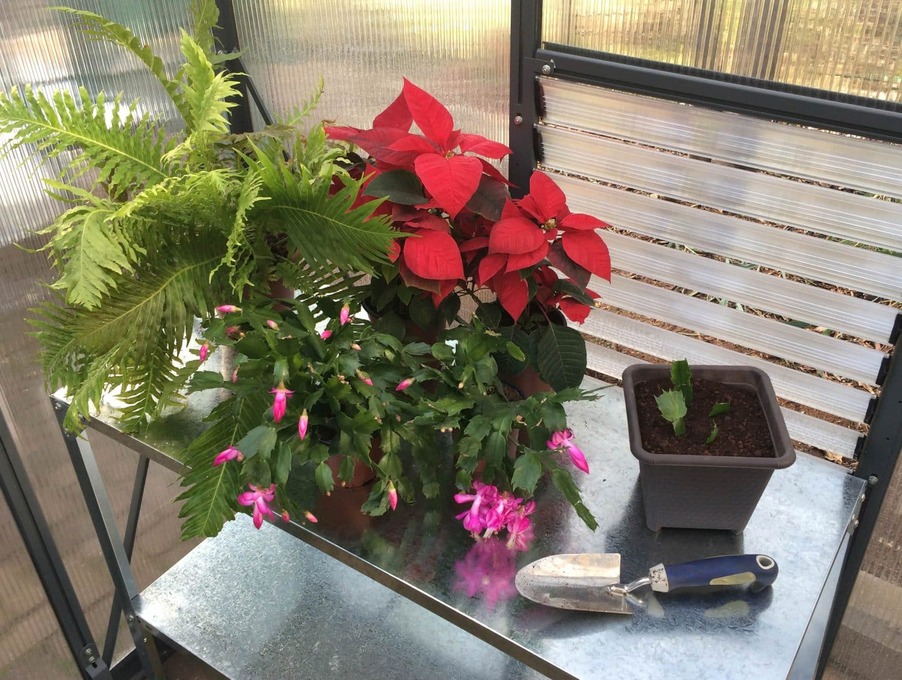
GROW GREENHOUSE STRAWBERRIES
That’s how you could also grow delicious strawberries in your greenhouse.
The Christmas Cactus (or Schlumbergera bridgesii) is a popular, winter-flowering houseplant that makes a great addition to nearly any indoor setting. The cactus blooms at Christmas and also sometimes around Easter time if cared for properly. You will see the tips of the leaves beginning to grow about a month before Christmas. The tips will grow darker as each day passes, until a bud forms. At Christmas time, as if by charm, the buds open to a beautiful flower that will add color and beauty to any holiday season.

In order to properly nurture your plant, you will need to give it a bright yet indirect light.
Keep it at a sunny spot, provided with the right amount of humidity. Water it with care,
as this is a tropical cactus it needs 50 to 60% humidity, less water is better than too much
water. Watch out for bud drops, these happen usually either because of over-watering,
lack of humidity or insufficient light. To provide humidity you can place the cactus container
on a trey of water filled with pebbles. Well-draining container is a must for Christmas cactus
as well as a well-drained soil.
Add fertilizer to assist plant growth when the plant is about 2 to 3 weeks old. It should be fertilized between 2 to 4 times a year. Stop feeding it about a month before the buds appear, usually around the end of October.

The key to getting your cactus blooming during the holiday season is actually a proper light
exposure, correct temperature levels (50-55°F / 10-12°C) and limited watering.
Keep your cactus in the dark during the night and make sure it gets an indirect, bright light
during the day. When you start seeing flower buds forming, increase light and humidity levels.
Prune your Christmas Cactus approximately a month after blooming, it will encourage it to
branch out, do not water for about 30 days after the blooming, only when you notice new
growth it is possible to resume watering.
Propagating a Christmas Cactus is easily done by cutting off a short Y-shaped section of the stem, consisting of 2 or 3 joint segments. Dry them for a couple hours prior to planting them into a small pot using the same potting soil as the parent cactus.
It is recommended to fertilize only after the new plant has sprouted at least one new segment. In order to transfer your cactus from generation to generation as was done in the past, re-pot it every 2-3 years. It is best done between February and April.
Don’t use a large pot, it flowers best when it’s pot-bound.
Good Luck!
